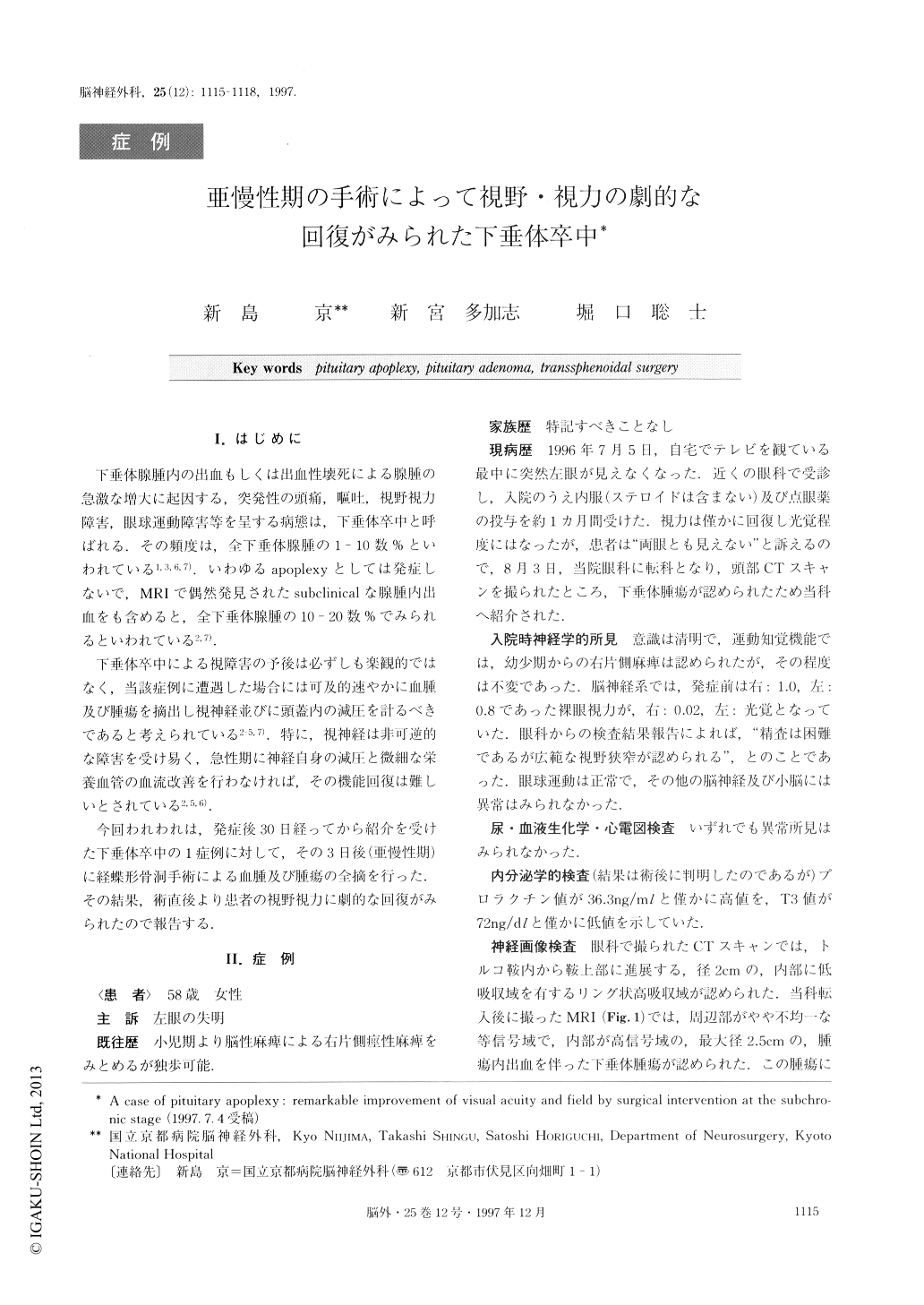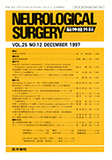Japanese
English
- 有料閲覧
- Abstract 文献概要
- 1ページ目 Look Inside
I.はじめに
下垂体腺腫内の出血もしくは出血性壊死による腺腫の急激な増大に起因する,突発性の頭痛,嘔吐,視野視力障害,眼球運動障害等を呈する病態は,下垂体卒中と呼ばれる.その頻度は,全下垂体腺腫の1-10数%といわれている1,3,6,7).いわゆるapoplexyとしては発症しないで,MRIで偶然発見されたsubclinicalな腺腫内出血をも含めると,全下垂体腺腫の10-20数%でみられるといわれている2,7).
下垂体卒中による視障害の予後は必ずしも楽観的ではなく,当該症例に遭遇した場合には可及的速やかに血腫及び腫瘍を摘出し視神経並びに頭蓋内の減圧を計るべきであると考えられている2-5,7).特に,視神経は非可逆的な障害を受け易く,急性期に神経自身の減圧と微細な栄養血管の血流改善を行わなければ,その機能回復は難しいとされている2,5,6).
A case is reported of a pituitary apoplexy which shows remarkable improvement of visual acuity and field by transsphenoidal surgery performed 33 days af-ter hemorrhage.
Possible factors contributing to this excellent surgical outcome are speculated about as follows; atrophic brain (wide suprasellar cistern), destruction of the sella floor by the tumor (infrasellar/extracranial decompres-sion), no vasospasm (pure intracapsular hemorrhage), no hypopituitarism, less invasive operation (transsphe-noidal surgery), and so on.
Transsphenoidal surgery is thought to be worth per-forming for pituitary apoplexy, even if timing for the operation is later than the acute stage and even if initial visual impairment is severe.

Copyright © 1997, Igaku-Shoin Ltd. All rights reserved.


